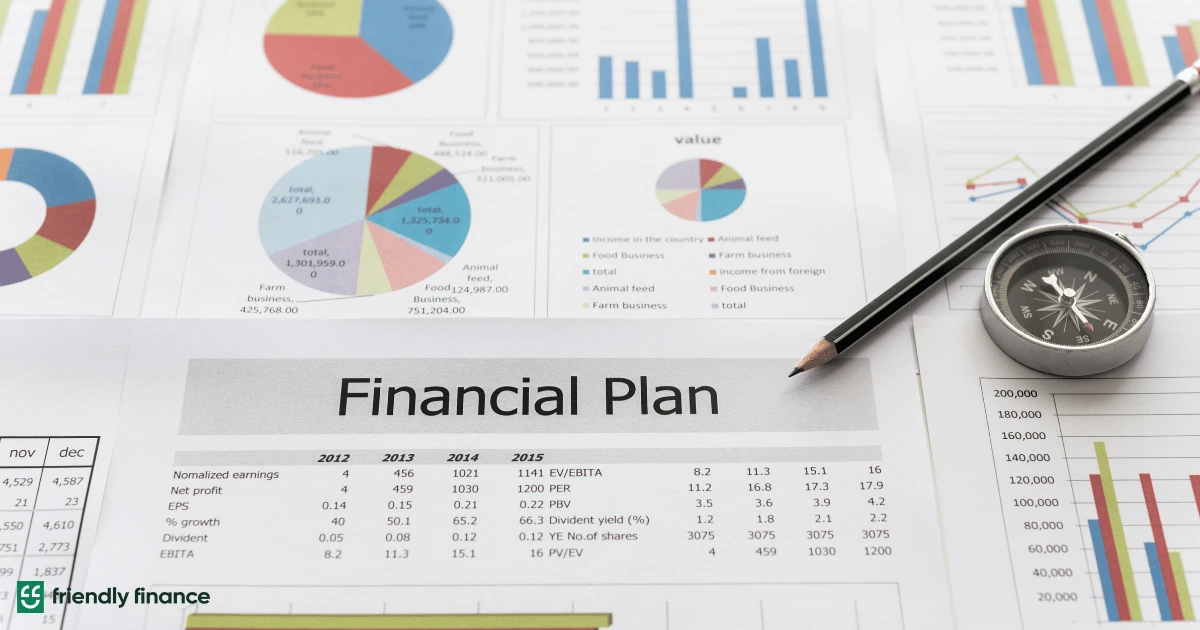How to Budget for a Warehouse Expansion: A Step-by-Step Financial Planning Guide
Thinking about expanding your warehouse? It’s exciting, but also a bit daunting, isn’t it? Budgeting for a warehouse expansion requires meticulous planning and a clear understanding of financial implications. But don’t worry; I’m here to give you some essential financial planning tips to guide you on this journey.
First off, why is budgeting so crucial? Well, expanding a warehouse isn’t just about adding more space; it’s about maximising efficiency, meeting market demands, and staying competitive. You need to know where every dollar is going to ensure a seamless expansion without breaking the bank.
Financial planning for warehouse expansion is a multi-step process. You have to evaluate your current financial position, set clear goals, draft a detailed budget, explore financing options such as business loans or a personal loan, and continuously monitor and adjust your budget. Sound overwhelming? Stick with me, and I’ll break it all down for you.
And here’s a little gem: Implementing Modula warehouse solutions can be a game-changer. Modula’s automated storage and retrieval systems not only save space but can significantly boost your operational efficiency. Intrigued? Let’s dive into the nitty-gritty!
Evaluating the current financial position
Before you even think about expansion, you need to get a clear picture of your current financial situation. It’s like looking both ways before crossing the street—totally essential!
First up, assess your current inventory levels and turnover rates. Knowing how fast your inventory moves helps you determine the additional space you’ll need. If your inventory turnover is low, maybe your existing space needs better management rather than expansion.
Next, review your existing warehouse costs and expenses. Are there areas where you could cut down costs? Could operational changes make your current setup more cost-efficient?
Analyze your cash flow and revenue projections. Can your current revenue support the added expenses of a new warehouse? You’ll also want to calculate the Return on Investment (ROI) for your expansion. How long will it take to recoup your investment?
Pro Tip: Use financial management software to track expenses and revenues efficiently. It simplifies the data analysis process and helps you make informed decisions.
Setting clear expansion goals
Once you’ve figured out where you stand financially, it’s time to set some goals. But not just any goals—clear, actionable, and time-bound goals.
Define your objectives for warehouse growth and scalability. Are you looking to double your storage capacity? Want to introduce automation for increased efficiency? Establishing what you aim to achieve is the first step to success.
Establish a timeline and milestones for your expansion plan. Having a timeline keeps you on track and ensures that every phase of the project is executed smoothly.
Consider market demand and industry trends. Why expand if the market demand doesn’t support it? Stay up-to-date with industry trends to ensure that your expansion will meet future needs.
Align your goals with your financial capabilities and constraints. Dream big but stay grounded. Your goals should be ambitious yet achievable within your budget.
Pro Tip: Regularly revisit and adjust your goals based on market changes and financial performance to stay aligned with your expansion objectives.
Creating a detailed budget
Alright, you’ve got your goals; now it’s time to talk money. Creating a detailed budget is crucial to avoiding financial pitfalls.
First, estimate costs for construction, equipment, and technology upgrades. Whether it’s new shelving or an HVAC system, list out everything you’ll need and get cost estimates.
Factor in operational expenses like labor and utilities. These ongoing costs can add up quickly, so make sure they’re part of your budget.
Include contingency funds for unexpected challenges. Just like you have an emergency fund for personal finance, your expansion budget should include a cushion for unforeseen expenses.
Compare quotes from multiple vendors for cost-saving opportunities. Getting different quotes will give you a better sense of the going rates and where you can negotiate.
Pro Tip: Always leave a buffer in your budget. It’s better to overestimate and come in under budget than to scramble for extra funds later on.
Exploring financing options
Now that you have a budget, how are you going to fund it? Exploring various financing options can help you find the best way to finance your expansion.
Research traditional loans, lines of credit, and leases. Each has its pros and cons, so choose what’s best suited for your financial situation and business goals.
Consider government grants and incentives for expansion projects. Many local and federal programs offer financial aid for business expansions. It’s free money—why not take advantage?
Explore partnership or investor opportunities. If you don’t want to go it alone, bringing in a partner or investor can inject much-needed capital for your expansion.
Evaluate the cost-effectiveness of Modula warehouse solutions for automation and efficiency. Automation may seem pricey upfront, but the long-term savings in labor and increased efficiency can make it worth every penny.
Pro Tip: Consult a financial advisor to explore various financing options. Their expertise can help you choose the best path without straining your finances.
Monitoring and adjusting the budget
You’ve got your budget and financing in place, but the journey doesn’t end there. Continuous monitoring and adjustments are imperative for a successful expansion.
Track actual expenses against budgeted amounts. Regularly comparing the two will help you catch any budget overruns early on.
Regularly review financial reports and performance metrics. Staying updated with financial performance ensures that you’re on track to meet your expansion goals.
Identify areas for cost savings or reallocation of funds. Sometimes, adjustments within the budget can free up resources for more critical areas.
Adapt to changing market conditions and business needs. Flexibility can be a game-changer when dealing with the uncertainties of market trends and business requirements.

